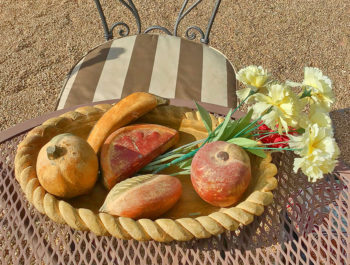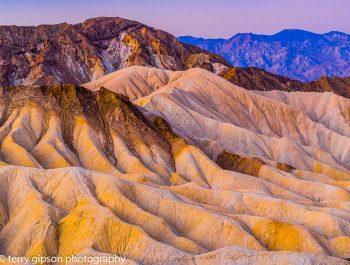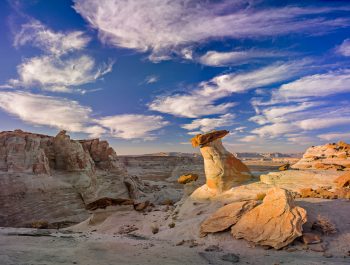Creating Artistic Photographs Part 3
Dreams
During our Fall 2019 Northern New Mexico workshop we visited the Georgia O’Keeffe Museum in Santa Fe. We spent hours admiring Georgia’s art, marveling at her interpretation of the landscape and of all that is found within it. Bones, flowers, mesas, clouds all transformed under her brush into the imaginary works of an artist for whom nature was a point of departure for dreams. Dreams of what else the landscape evoked in her mind. We each picked a favorite. For some it was a mesa, painted with vivid red and yellow ochre, for others, it was a bone rendered as a sculpture, or a horn made to look like the root of a tree, each organic in their resemblance to what else they could be. For others it was a painting of a cloud, reminiscent of a blanket, soft and ethereal, somehow able to transcend space and time. For me, it was a landscape, a place I recognized not because I had been there but because it made me remember places I had been to, other places, different yet similar. I liked it not because it was realistic but because it contained the essence of what this place, or rather these kinds of places, had in common. The colors were not the colors that I had seen but they were the colors I would have created had I painted it. It was the kind of landscape I wanted to create and for this reason, I favored it.
We walked out of the museum with fresh images of the kind of photographs we wanted to create during the workshop. Not photographs but works of art, the landscape being only a point of departure, a reality forever altered in our minds by the brushstrokes, the colors, the changing shapes created by O’Keeffe. Photography was no longer a means to reproduce reality. It was a mean of capturing something with the intent of modifying it afterward, when we were back in our studios, our minds fresh with the inspiration instilled in us by the land.
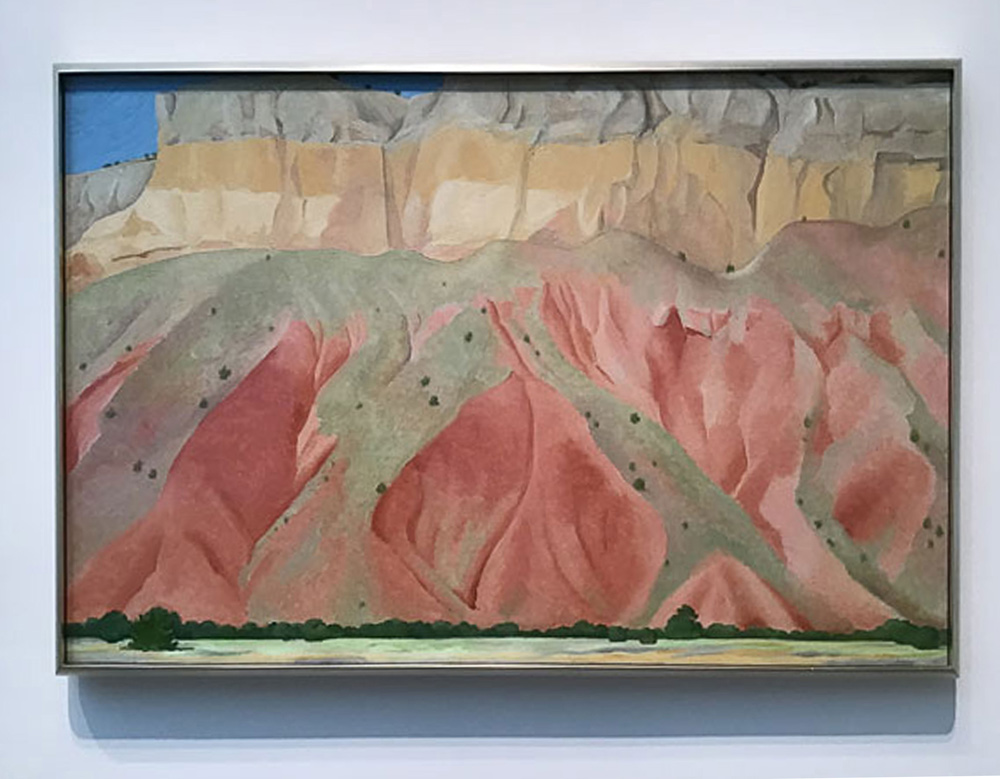
Georgia O’Keeffe created images that were new, that had never been seen before. She was an artistic pioneer, unencumbered with rules, traditions or what the powers that be of the art world expected her to do. She went against all that, creating images that had never been seen before, images whose purpose was to express the world she saw in her mind’s eye.
This freedom made me think of the often mentioned fact that the purpose of landscape photography is to generate the desire to protect nature. That the realism of photography has the power of encouraging nature protection. Hidden behind this statement is the assumption that realistic representations are necessary for the audience to feel the need to protect nature when seeing photographic images of the landscape. It is a statement that limits my creativity, making me feel I have to create realistic images and not abstracts like Georgia O’Keeffe.
If this were true, if realistic representations were required to bring awareness to nature protection, then landscape paintings would not have the power of doing so. Yet I don’t think Georgia O’Keefe paintings have done any less to bring awareness to the necessity of protecting the beauty of nature than realistic photographs have, even though her paintings are undoubtedly abstract. What matters is not whether an image is realistic or not, what matters is what the image is about, what it focuses on, what it expresses. O’Keeffe’s paintings are about the beauty of nature, focusing on its lesser known aspects, be it bones, intimate details, colors, shapes or other. Regardless of the exact subject, they express a deep reverence for the beauty found in nature. As such they bring awareness to this beauty, to these lesser known aspects, to things we may otherwise have walked right by unaware of their existence. In turn it is this awareness that gives the audience the desire to protect this beauty, to prevent it from being destroyed, to save it. In the mind of the audience the nature shown in her paintings is real even though it is depicted in an abstract fashion. What we see in her paintings is the outcome of an inspiring sight provided by nature and how this inspiration was transformed into a work of art by the artist. What we want to protect, what needs to be protected, is the source of this inspiration and that source is nature. So yes, artists who create imaginary images are helping protect nature, not by showing what is really there but by showing how nature inspired them to create art, by demonstrating the inspirational power of nature.
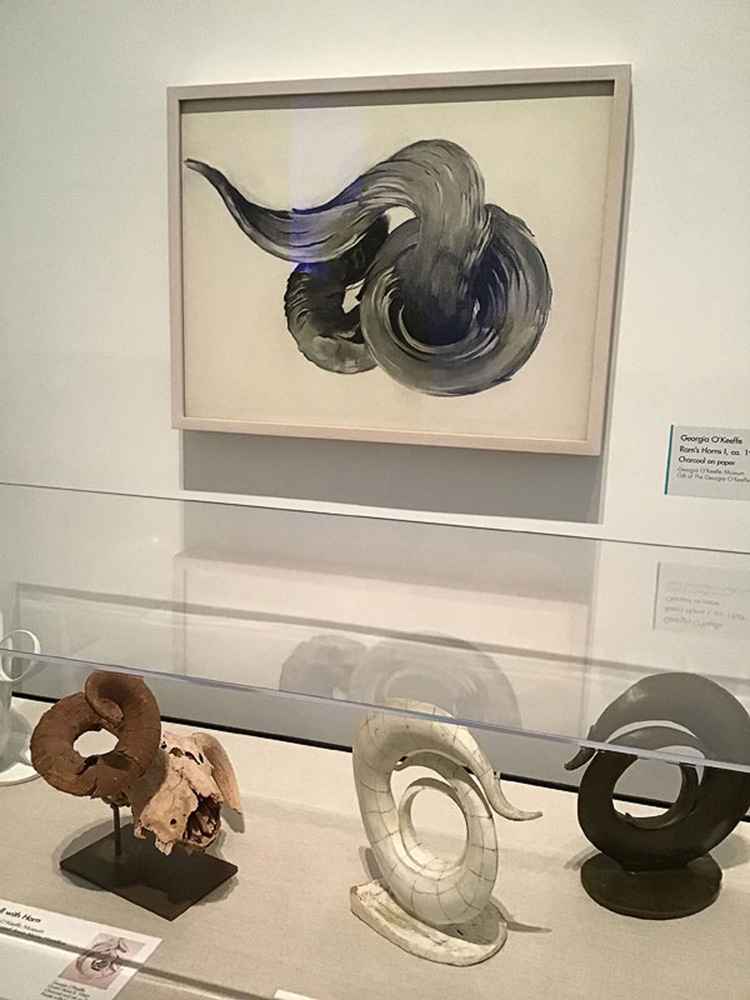
Personally, I don’t feel less inclined to protect nature when I see a painting than when I see a photograph. It is just that photography has been assigned the duty of depicting nature in a realistic fashion while painting has not. Why this is is understandable. Photography has the ability of creating extremely detailed and realistic representations. This is not to say that paintings do not. The hyperrealism movement proves that this is possible. It’s just that when taking a photograph reality comes naturally, automatically in fact, while abstraction, or interpretation, requires artistic intervention. With painting the opposite is true. Artistic intervention is not only expected it is required. Without the painter’s facture, there would be no painting. Realistic representations, however, come at a surprise because they are not expected. They require that the artist becomes a camera, so to speak, and does the opposite of what comes naturally, removing as many traces of artistic intervention — of facture — in order to make the painting appear to be a photograph. Hyperrealism is to photography what manipulated photographs are to a painting. Each inches closer to the other medium by borrowing some of that medium’s characteristics.
I describe my work as being a combination of painting and photography. I was trained as a painter and now use a camera to capture the photographs that form the basis of my work. I say basis because each final image is a significant departure from the reality captured by the camera. I do to each capture what I like to call ‘unspeakable things,’ going as far as guaranteeing that all my work is manipulated and offering to give collectors their money back if it is not (I never had to refund anyone so far).
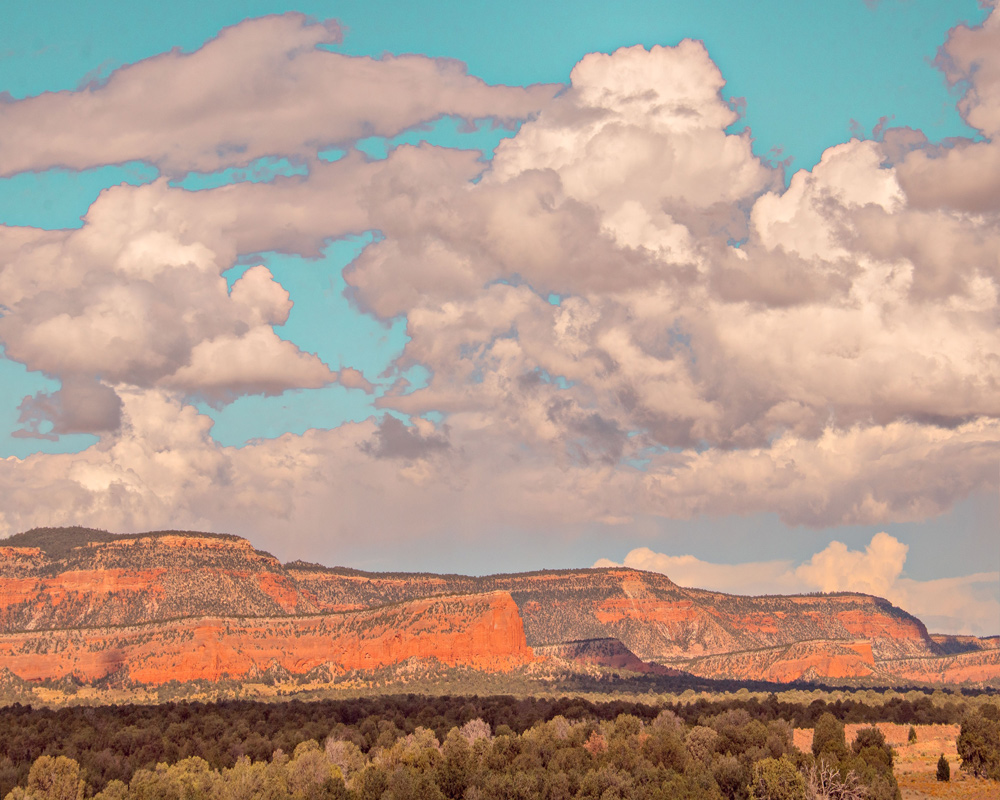
A remark I often hear is that interpreting nature by creating images that are a combination of painting and photography, something many refer to as ‘manipulated photographs,’ does not foster the desire to protect nature. In fact it may discourage people from doing so because the photograph shows something that does not exist and why would someone protect something that does not exist? I find that remark interesting because, as I mentioned, paintings inspired by natural subjects do generate the desire to protect nature. If this is so then why can’t ‘manipulated’ nature photographs have the same effect? After all, neither paintings or manipulated photographs show something that really exists.
The fact is that focusing on what is real or not is a misunderstanding. What the audience sees is the beauty of the natural world. If the artist’s goal is to express that beauty the medium used by the artist does not matter. What matters is the artist’s motivation, the visual contents of the piece and most of all the emotional impact of the artwork on the audience. All other considerations are more a matter of personal stance than a matter of actual consequences. Certainly one is free to believe that photographs have to be realistic in order to be used for nature preservation purposes. However, this is more a matter of following an environmental activist paradigm than a comment on their effectiveness.
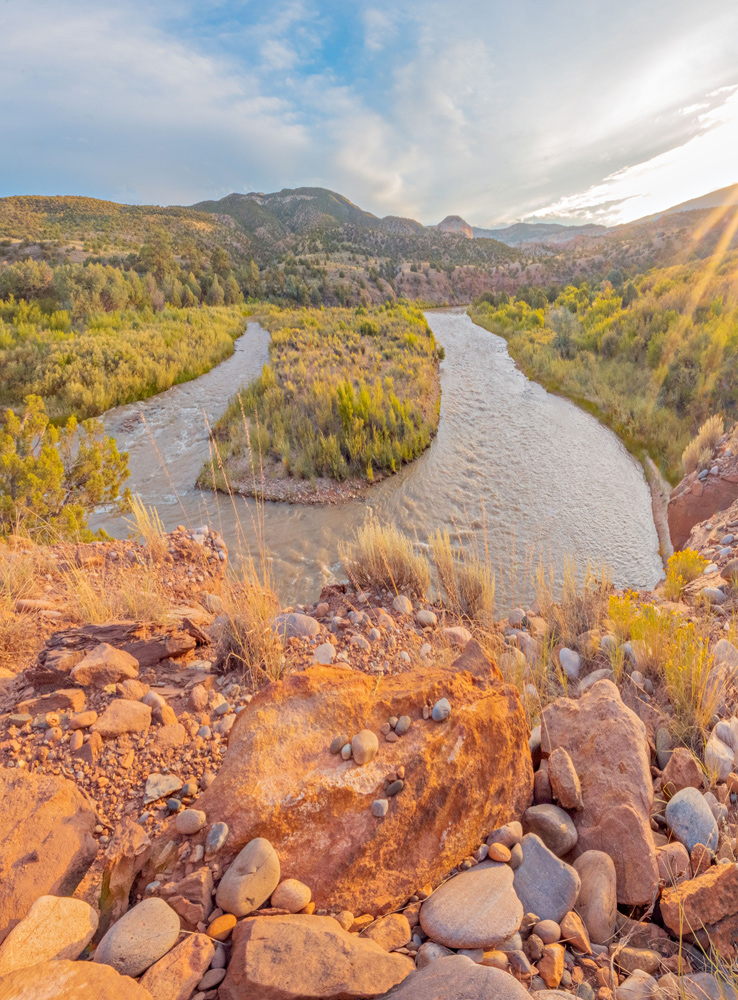
Personally, I am an artist, not an environmental activist. My work is not politically motivated and I do not seek to create images that share a message about the importance of protecting nature. I just seek to express beauty through aesthetic means. I want to show the world I see in my mind. I want to create colors and forms that are unique to me. These are my artistic goals.
This does not mean that I believe supporting nature is unimportant. It is and I am in favor of it. All it means is that I do not create work with the intent of having it used for nature protection campaigns. If I were asked to have my work featured in such a campaign my answer would most likely be yes, I just have never been asked so far. In other words would I yes, did I so far no.
If this seems convoluted or even confusing that’s because the question is confusing to me. Rightly so because it points to an intent for my work which is not mine. Creating art is a complex process, one that requires focus, reflection and long hours. It is a career, even if many are surprised when they see the words art and career together in one sentence. For that career to be successful specific goals have to be set. My goals are clearly stated. My motivation is purely aesthetic, focused on color and form. I seek these in nature and I hope my subject remains intact forever. I seek to share how nature can be seen through other eyes, my eyes, and I want to present this vision as an alternative to other artist’s visions. Beauty is central to my work and the desire to protect this beauty so that it can continue to be the source of inspiration for myself and for others is ineluctable. However, engaging in a fight if it becomes necessary is not my cup of tea. For one I shy away from negativity and conflicts are the locus of such emotions. For two my work consumes all my available time and engaging in other activities would deny my work the time it requires.
It is funny the amount of time I just spent arguing against this, offering reasons why I don’t want to engage in nature protection or environmental issues. I am surprised at this myself. And yet I shouldn’t. It is one of the things artists have to deal with: the feeling of unjustifiable guilt about aspects of what we do that we feel we should be concerned with but are not. I call it artistic guilt and this is only one aspect of it. There are many more, all hang-ups, things we drag behind us, dead weights that take time away from doing what really matters which is creating art. Things that shouldn’t matter but that do because we wrongly believe so. Things artists have to deal with but things that successful artists, a truly successful artist that is, learn to push aside, to disregard, to laugh at even, to not worry about regardless how much other people make us feel guilty about or how much we make ourselves feel guilty about. These things, these issues that matter when they shouldn’t, are what separates us from being successful, what prevents us from spending our time where it matters most. It is what prevents us from being free to create whatever we want to create. Writing about it helps. I will do more of it.
About Alain Briot
You can find more information about our workshops, photographs, writings, and tutorials as well as subscribe to our Free Monthly Newsletter on our website. You will receive 40 free eBooks when you subscribe to my newsletter.

I create fine art photographs, teach workshops with Natalie and offer Mastery Tutorials on composition, image conversion, optimization, printing, business and marketing. I am the author of Mastering Landscape Photography, Mastering Photographic Composition, Creativity and Personal Style, Marketing Fine Art Photography and How Photographs are Sold. All 4 books are available in eBook format on our website at this link: http://beautiful-landscape.com/Ebooks-Books-1-2-3.html. Free samples are available so you can see the quality of these books for yourself.
Workshops with Alain and Natalie Briot
If you enjoyed this essay you will enjoy attending a workshop with us. I lead workshops with my wife Natalie to the most photogenic locations in the US Southwest. Our workshops focus on the artistic aspects of photography. While we do teach technique, we do so for the purpose of creating artistic photographs. Our goal is to help you create photographs that you will be proud of and that will be unique to you. The locations we photograph include Navajoland, Antelope Canyon, Monument Valley, Zion, the Grand Canyon, Death Valley and many others. Our workshops listing is available on our website
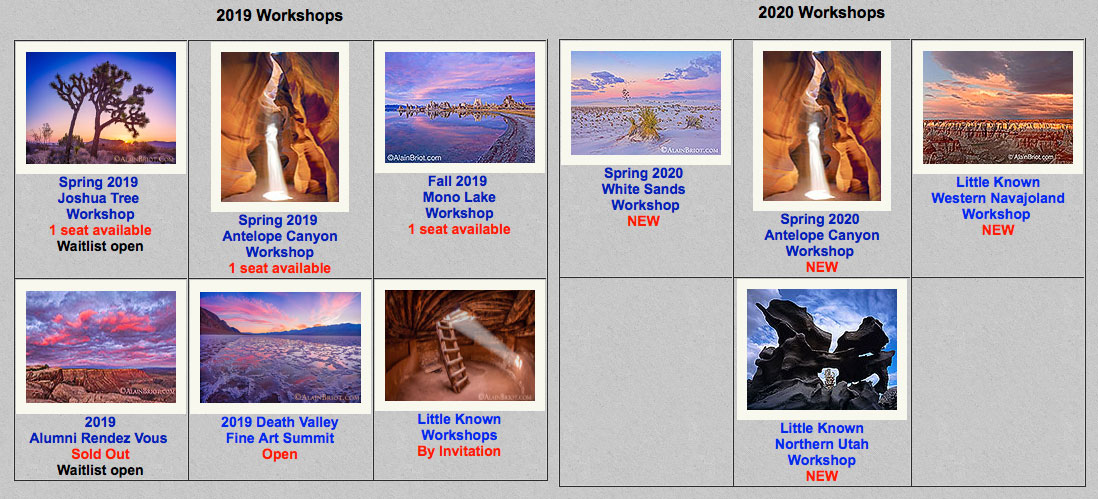
Alain Briot
October 2019
Glendale, Arizona
Author of Mastering Landscape Photography,Mastering Composition, Creativity and Personal Style, Marketing Fine Art Photography, and How Photographs are Sold. http://www.beautiful-landscape.com [email protected]






